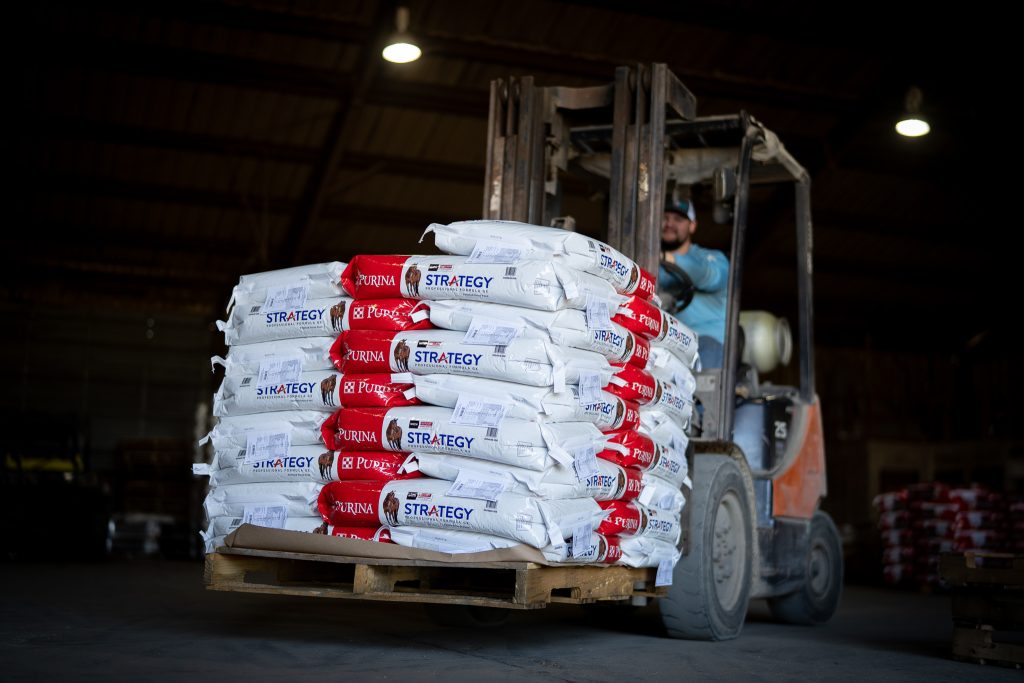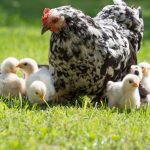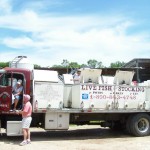 No matter what animals roam your farm, determining which feed to purchase can feel like a big task. When choosing the right feed, you’ll want to look at and compare feed tags. But the question is, how do you read a feed tag and truly understand it? At first, it may feel tough to make sense of all the information on a tag, but with a little knowledge, you’ll understand the feed-tag lingo.
No matter what animals roam your farm, determining which feed to purchase can feel like a big task. When choosing the right feed, you’ll want to look at and compare feed tags. But the question is, how do you read a feed tag and truly understand it? At first, it may feel tough to make sense of all the information on a tag, but with a little knowledge, you’ll understand the feed-tag lingo.
Feed tag labels are required by law to be on every bag of commercial feed. This allows you to have consistent information across all brands while you’re comparing products. There are limits, however, to what can be included on feed tags and it’s important to understand what you can and cannot determine from the information presented.
What a feed tag label tells you:
Product name – An obvious but important piece of information. If a product is medicated, the word “medicated” will follow the product name.
Purpose statement – Information about the species and animal class the feed is indicated for. This information is critical to check to determine if the feed has been specifically formulated for your animal type.
Active ingredient(s): Lists any active ingredients in the feed and their associated level.
Guaranteed analysis – A list of required nutrients, dependent upon the intended use of the feed and animal type. Any nutrient guaranteed on the tag is potentially subject to testing by regulatory agencies to determine whether the tag guarantees are accurate.
Feed ingredients – A list of ingredients in the product beyond what’s listed in the guaranteed analysis section. The list may include individual ingredients and/or collective terms (broad categories that include a variety of similar ingredients). Ingredients are required to be listed in descending order of inclusion.
Directions of use – Explains the safe and effective use of the feed.
Feeding and management instructions – A detailed description explaining how the product should be fed. When a product is not fed according to the directions, there is a risk that the nutritional needs of the animals eating the feed are not being met. There’s also a risk that the contents of the feed may be harmful to the animals not listed on the feed tag. Medications are very specific to the animal it’s formulated for. The presence of copper could be harmful to certain species.
Manufacturer/distributor information – The name appearing on the label is responsible for the feed product and regulatory compliance. Distributors use the statement “manufactured for” or “distributed by” to differentiate themselves from manufacturers.
Storage – Instructions for feed storage.
Precautionary statements and warnings – Describes potential hazards for humans and domestic animals.
What a feed tag label doesn’t tell you:
While a feed tag can help you make decisions on what feed to purchase, it doesn’t tell you everything. It’s important to do your own research on factors like quality control, product research, feeding rates and more.
Quality control – While there is an industry minimum standard for quality and safety measures for animal feed products, quality control differs widely between feed manufacturers with many companies going above and beyond the minimum. It’s important to investigate a manufacturer’s approach to quality control before purchasing feed.
Research behind the feed – Similar to quality control, not all companies put the same level of research behind their feed. Ensure the product you’re feeding your animals has been thoroughly researched and tested. So you know the product does what a company says it does, make sure there is proven data research supporting the product you’re feeding.
Feed cost – Calculating the cost of feed per head per day is the best way to determine the value of your investment from purchasing a bag of feed. For example, a higher-priced bag of feed with a lower feeding rate per day will often cost less to feed. This means a cheaper bag of feed isn’t always going to lower your feed bill.
Risks of feeding off-label – The purpose statement lists what animals the feed should be fed to. If an animal isn’t listed there, then the feed shouldn’t be fed to that animal. This is especially important if you have multiple species. For example, if you have a mixed flock, ducklings and goslings should not be fed a medicated starter-grower feed, like you might choose for your chicks. Medicated starter feeds include amprolium, a coccidiostat that’s not approved for use with ducks or geese. If you have sheep, stay clear of any feed with high amounts of copper in it. Look into these potential hazards for the animals you have to ensure their safety.
Now that you know how to read a feed tag, you will be able to take on the feed aisle at your local farm supply store. Remember to look at the 10 pieces of information that are necessary for a feed tag label and to conduct your own research on feed.
At Purina, we take pride in things that cannot be found on the feed tag. We study nutrition advances, conduct scientific research at the Purina Animal Nutrition Center, complete field trials to ensure feeds perform before made publicly available, fine-tune feed formulations, work with quality control and product specialists and constantly monitor product quality.
Simply put, we make every effort to ensure our feed products are the best they can be.
Patrick Briggs, Ph.D. Purina Animal Nutrition




